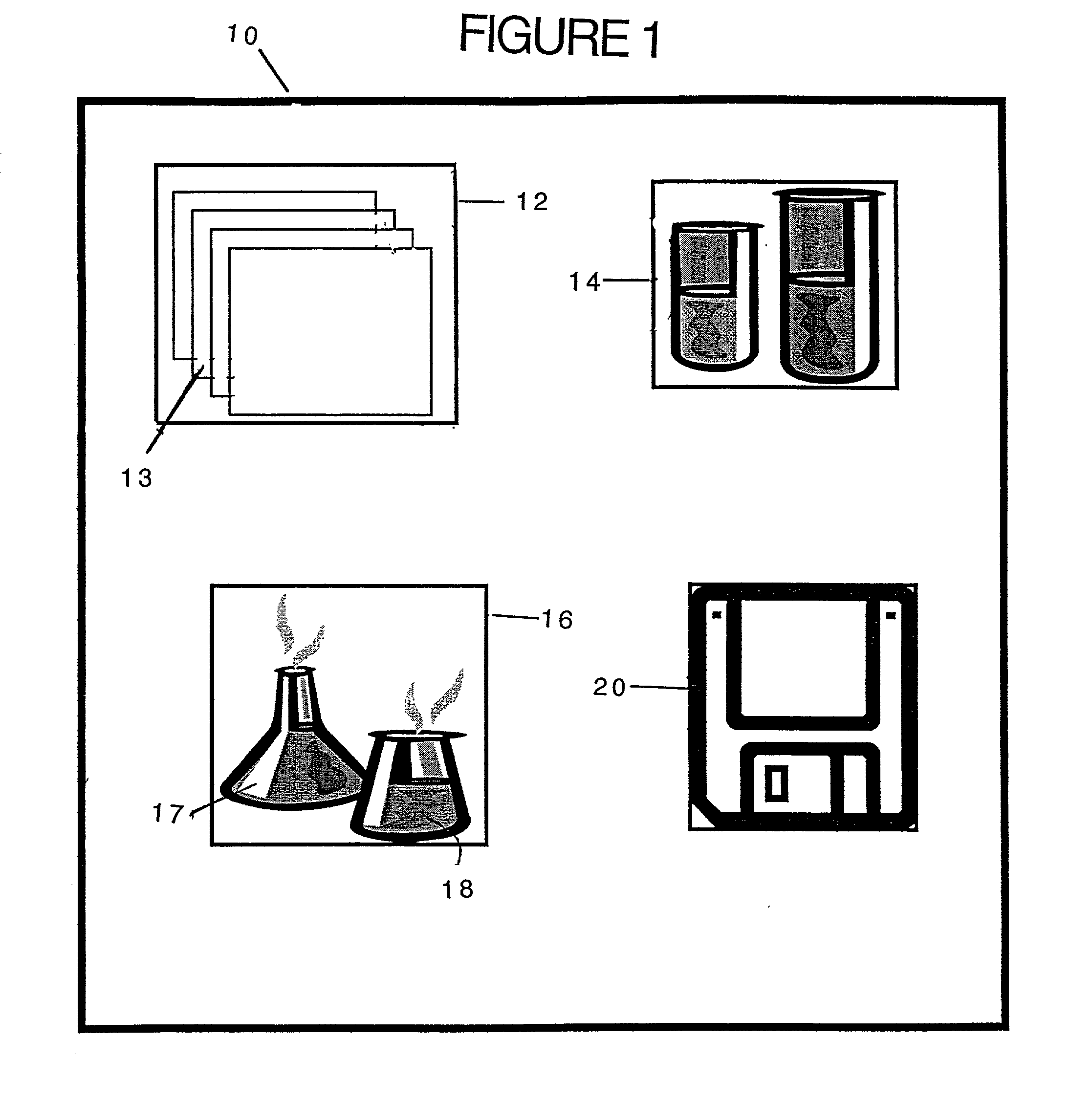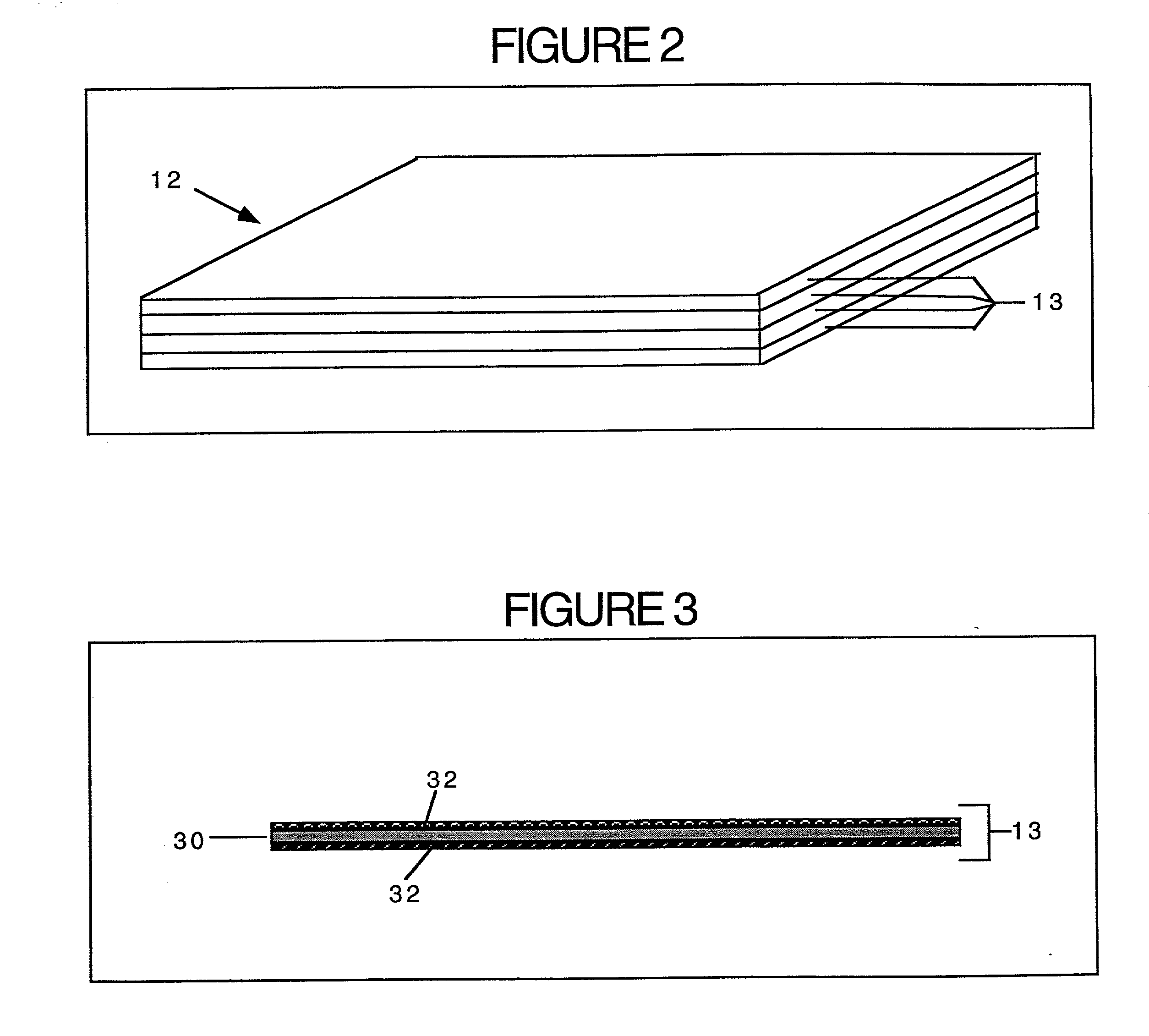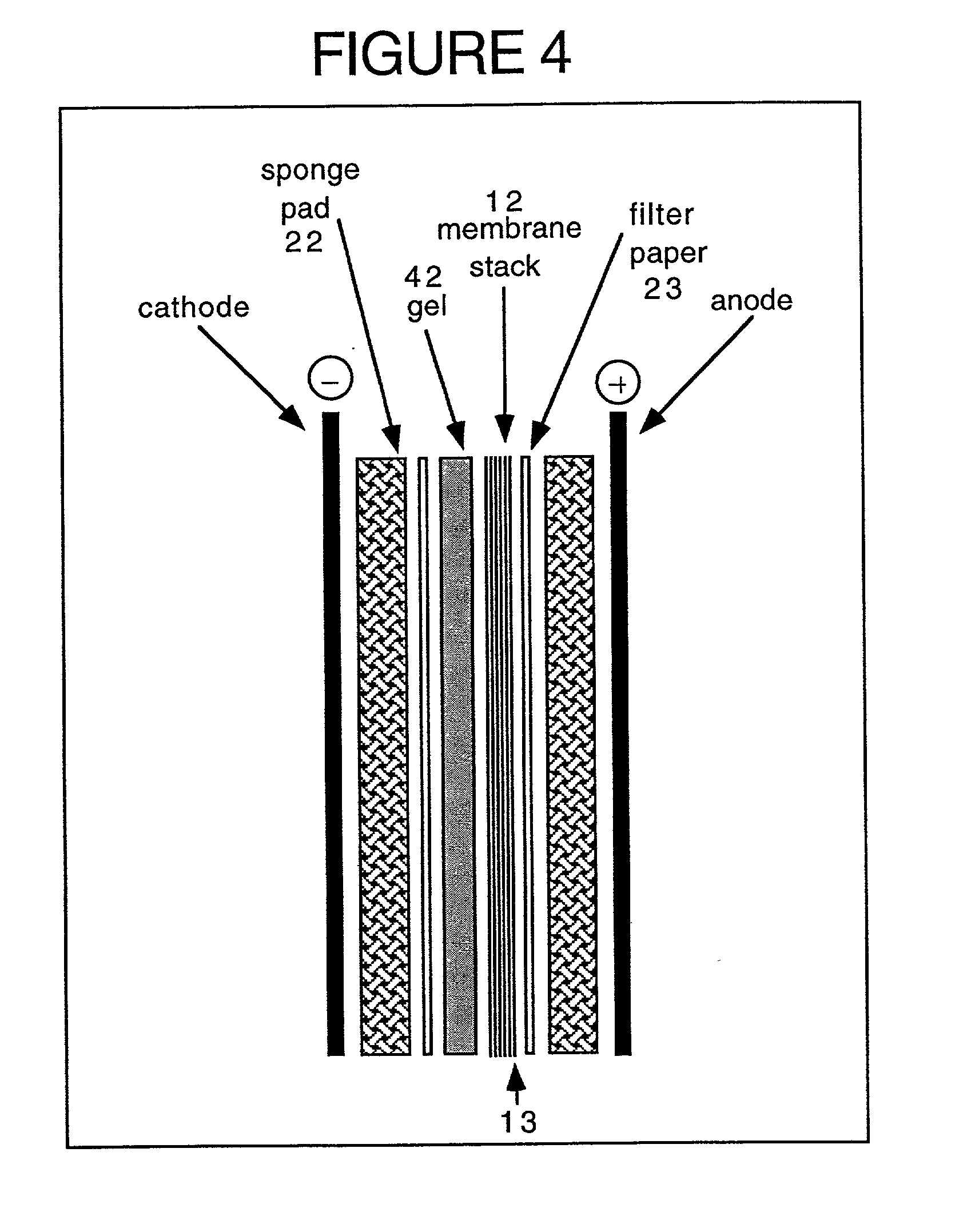Method and kit for proteomic identification
a proteomic and kit technology, applied in the field of methods and kits for proteomic identification, can solve the problems of insufficient application, inability to generate about 100 distinct protein bands, and inability to identify by electrophoresis, and achieve the effect of cost-effectiveness
- Summary
- Abstract
- Description
- Claims
- Application Information
AI Technical Summary
Benefits of technology
Problems solved by technology
Method used
Image
Examples
example 2
Transfer And Capture Of The Proteins From A 2-D Gel
[0127] 2-D protein gels have greater separation capabilities than 1-D gels. Two dimensional separation allows identification of hundreds or even thousands of proteins on the same gel. Proteins separated by 2-D gels are identified by protein sequencing or immunological features. Sequencing requires expensive equipment and highly trained operators and is limited to a small number of privileged groups. Immunodetection is easier to do but it is of low throughput since traditional blotting procedures generate only one membrane copy of gel. As described above, one can make at least 10 and possibly even larger number of 1-D gel copies using PCNC membranes. In order to find out if 2-D gel can be "copied" the same way, the proteins present in 500 .mu.g of Jurkat cell protein lysate were separated on 2-D PAGE. A commercial immobilized pH gradient (IPG) from 3.0 to 10.0 was used for first-dimension separation (Pharmacia Biotech, Uppsala, Swede...
example 3
Use Of Layered Membranes For Protein-DNA Complexes Identification
[0128] The following experiment was conducted to demonstrate the ability of the layered membranes of the present invention to speed up and simplify the identification of the proteins of a protein-DNA complex. This goal was achieved by making copies of the gel and immuno-probing each of the membranes with a different antibody of interest.
[0129] 250 ng of recombinant his6-c-rel and 120 ng of purified recombinant his6-CREB were incubated alone or in combination with 0.2 ng of 32P 5' labeled duplex oligonucleotide encoding the sequence 5' TCGACCTCTTCTGATGACTCTTTGGAATTTCTTTAAACCCCCA 3' (SEQ ID NO.:1), in 10 .mu.l of buffer containing 10 mM Hepes, 50 mM NaCl, 20% glycerol, 4 mM BME. The reactions was allowed to proceed at room temperature for 30 min. Samples were then separated by electrophoresis on 4% polyacrylamide gel at 180 Volts for 1 hour, transferred in 25 mM TRIS,192 mM glycine, 0.025% SDS and 20% methanol (60-110 V ...
PUM
| Property | Measurement | Unit |
|---|---|---|
| thickness | aaaaa | aaaaa |
| thickness | aaaaa | aaaaa |
| thickness | aaaaa | aaaaa |
Abstract
Description
Claims
Application Information
 Login to View More
Login to View More - R&D
- Intellectual Property
- Life Sciences
- Materials
- Tech Scout
- Unparalleled Data Quality
- Higher Quality Content
- 60% Fewer Hallucinations
Browse by: Latest US Patents, China's latest patents, Technical Efficacy Thesaurus, Application Domain, Technology Topic, Popular Technical Reports.
© 2025 PatSnap. All rights reserved.Legal|Privacy policy|Modern Slavery Act Transparency Statement|Sitemap|About US| Contact US: help@patsnap.com



